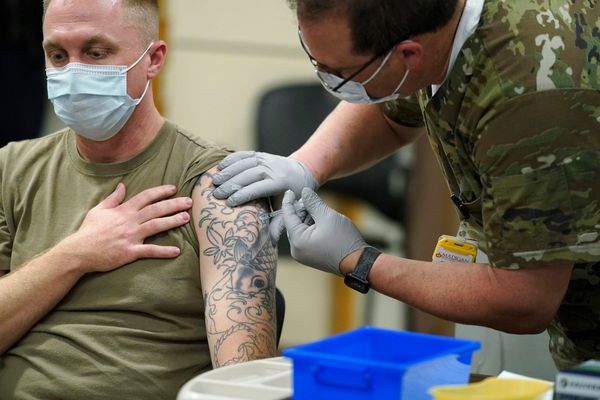
People with major depression could alleviate their symptoms by self-administering a form of electrical brain stimulation at home, according to a clinical trial of the therapy.
Patients who took a 10-week course of the treatment were about twice as likely to see their depression go into remission than those in a control group who performed the same procedure with the current switched off.
The findings suggest that people with depression could receive beneficial brain stimulation without having to attend a clinic and that the treatment could become an effective alternative for those who do not want, or do not respond to, more traditional therapies.
“This is a potential first line treatment for depression,” said Cynthia Fu, a professor of affective neuroscience and psychotherapy at King’s College London and senior author on the study.
“It can also be used for people whose depression hasn’t improved with antidepressant medication, for people who don’t like antidepressant medication, or who don’t want psychotherapy.”
For the phase two trial, 174 people with major depressive disorder were given a headset to deliver what is known as transcranial direct current stimulation (tDCS). The headset, produced by Flow Neuroscience, which also funded the trial, contains two electrodes that apply a weak current of up to 2 milliamps to the forehead.
The 10-week course was supervised in real-time over video conference calls, starting with five 30-minute sessions a week for three weeks, followed by three 30-minute sessions a week for the next seven weeks.
While half the participants received electrical brain stimulation as expected, the other half unknowingly had “inactive” therapy, where the device delivered a brief, weak current at the start and finish of the session, but was otherwise not providing any stimulation.
Writing in the journal Nature Medicine, the researchers report that depression improved in both groups over the 10-week course, according to their scores on standard depression scales.
But those who had active brain stimulation improved most. The remission rate in the brain stimulation group was 44.9% compared with 21.8% in the inactive control group.
An estimated 5% of adults globally live with depression. The most common treatments are antidepressants and psychological therapies but more than a third of people with major depressive disorder do not reach full clinical remission.
tDCS makes neurons in frontal regions of the brain fire more readily, an effect that is thought to have a beneficial impact on the broader brain network affected by depression.
“We did see a placebo effect, with people who were receiving the inactive treatment showing an improvement,” Fu told the Guardian. “But there were more people in the active treatment arm whose depression improved than in the inactive treatment arm.”
The current delivered to the brain during tDCS is at least 400 times weaker than that used in electroconvulsive therapy, which induces a generalised seizure in the brain. To reduce any risks from prolonged stimulation, the device shuts off after 30 minutes.
“Although tDCS for depression has been in Nice [National Institute for Health and Care Excellence] guidelines since 2015 and is considered ‘safe’, uncertainties about its efficacy remain,” said Myles Jones, a senior lecturer in psychology at the University of Sheffield, who was not involved in the study.
“This study demonstrates that repeated home use of tDCS is associated with a reduction in a key depression measure.”
He added: “Although single doses of tDCS have proved equivocal in changing neural activity and cognitive performance, prolonged use over days or weeks has been shown to be clinically effective in depression, tinnitus and a range of conditions.”
• This article was amended on 22 October 2024. Owing to incorrect information supplied to us, an earlier version said that tDCS was already used to treat conditions such as psychosis and eating disorders.







